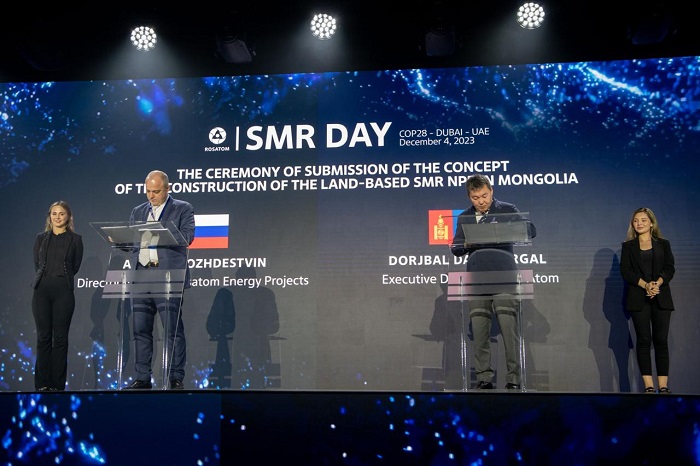ROSATOM held the Small Modular Reactors Day (SMR Day) on the sidelines of the COP28 Climate Conference, presenting a full range of technological solutions to achieve climate goals and ensure a low-carbon future. For the first time, the SMR Day was held with the support of Rosatom at EXPO-2020.

“We are convinced that nuclear energy will inevitably become the foundation of the low-carbon balance we all strive for. Low-capacity nuclear power generation, as one of the reliable technological solutions, will occupy a worthy place in the future of nuclear energy. I am confident that Rosatom’s proposals in the field of small modular reactors will become an effective and environmentally friendly choice for those countries that, for various reasons, have not considered nuclear generation before,” noted Alexey Likhachev, Director General of ROSATOM, in a video address to guests and participants of the SMR Day.
The event opened with a colourful multimedia show demonstrating the importance of preserving harmony between humans and nature in Yakutia, where Rosatom has started the implementation of a unique low-capacity nuclear power plant project. The power plant, designed to boost the region’s development, is being constructed with careful consideration for the fragile Arctic ecosystem. The commissioning of the land-based SMR in Yakutia is planned for 2028. In addition to the presented project, Rosatom’s portfolio also includes the world’s only floating nuclear power plant (FNPP), the “Akademik Lomonosov”. Since its commercial operation began at the end of 2019, the FNPP has generated over 700 million kilowatt-hours of electricity for Pevek, the northernmost city in Russia. Based on this experience, work is underway on the next-generation floating power unit technology based on the RITM-200 reactors. It is planned that by 2029, they will start supplying power for the development of the Baimskaya ore zone in Chukotka. Rosatom is also implementing the “Shelf-M” microreactors project with a capacity of up to 35 MW. The first plant based on this technology is expected to be operational by 2030.
Source: Communications Department of ROSATOM